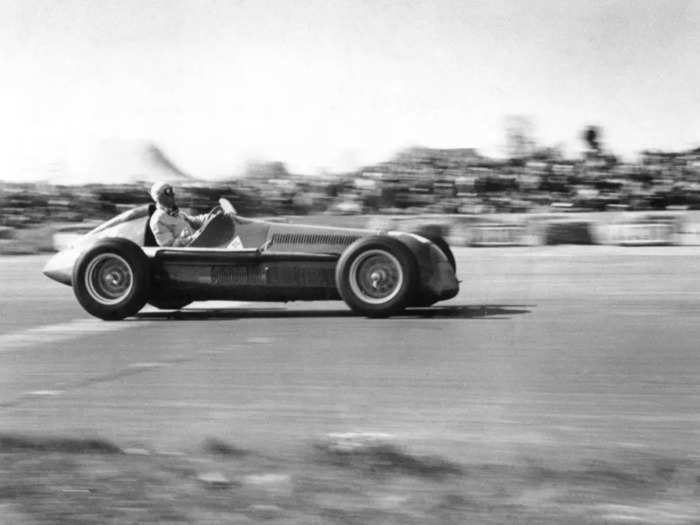
Formula 1 drivers at the 1951 Paris Grand Prix.Universal/Corbis/VCG via Getty Images
This year's Formula 1 season kicks off on March 2 with the Bahrain Grand Prix in Sakhir.
A lot has changed since the first F1 race was held almost 75 years ago. Ahead of the new season, here's a look back at the early years of F1 races.


Two years later, George VI died of coronary thrombosis and Queen Elizabeth ascended to the British throne.

Formula 1 drivers posed for a photo in 1951 at the Paris Grand Prix wearing their jumpsuits, head coverings, and goggles.

At the British Grand Prix in 1956, the cockpit of the Connaught-Alta B race car was furnished with plaid fabric.

At the Monaco Grand Prix, Maurice Trintignant rode to victory in a Ferrari 625.

German driver Wolfgang von Trips died after he was thrown from his racecar during a collision at the Italian Grand Prix.
Safety standards weren't as advanced in the early years of the F1. Yahoo News reported that 14 F1 drivers died throughout the 1960s.

At the Questor Grand Prix in 1971, fans watched the race from a safe distance in the stands.

Viewers at home watched Denny Hulme win first place at the German Grand Prix in color on their TV screens.

Graham Hill won the Spanish Grand Prix held in Madrid in 1968 while driving a Lotus race car.

At the 1978 Argentine Grand Prix, drivers wore jumpsuits embroidered with logos for Miller beer, Gulf oil, Marlboro cigarettes, and other brands.

It was the first Formula 1 race where every car featured a turbocharged engine, ESPN reported.

The first safety cars appeared at F1 races in the early 1970s. The International Automobile Federation formalized their presence on racetracks at the end of the 1996 season.

Grace Kelly, Princess of Monaco, and Prince Rainier of Monaco appeared at the Grand Prix of Monaco beginning in the 1950s. Their children, Prince Albert, Princess Caroline, and Princess Stephanie, went together in the 1980s and 1990s and still attend today.
 OPINION: Balancing act or pure jugglery — navigating professional challenges as a working mother
OPINION: Balancing act or pure jugglery — navigating professional challenges as a working mother
 OPINION: Ecofeminism — a diversified perspective on Mother’s Day
OPINION: Ecofeminism — a diversified perspective on Mother’s Day
 Inflation data, Q4 earnings, global trends to drive stock markets this week: Analysts
Inflation data, Q4 earnings, global trends to drive stock markets this week: Analysts

Copyright © 2024. Times Internet Limited. All rights reserved.For reprint rights. Times Syndication Service.